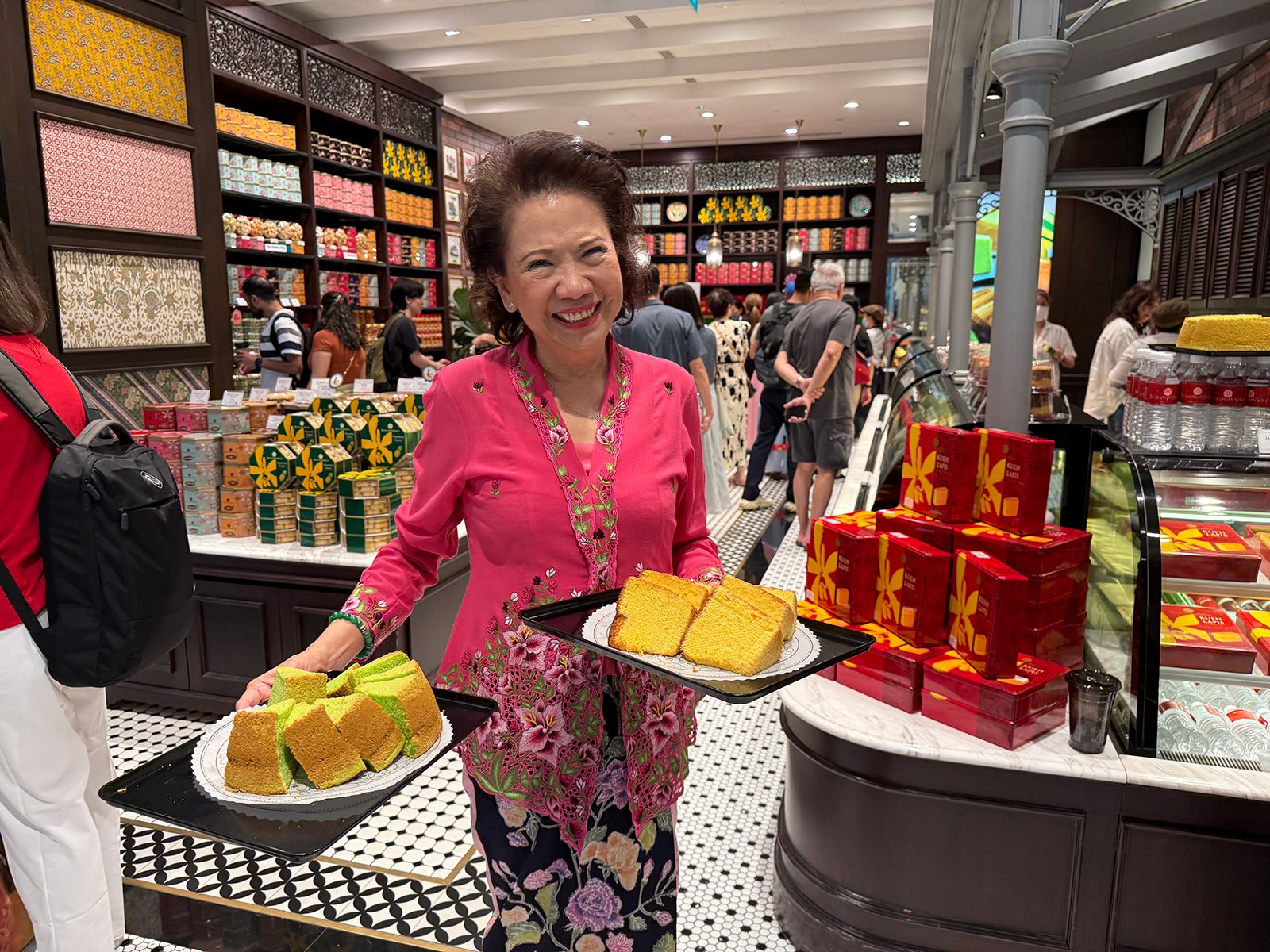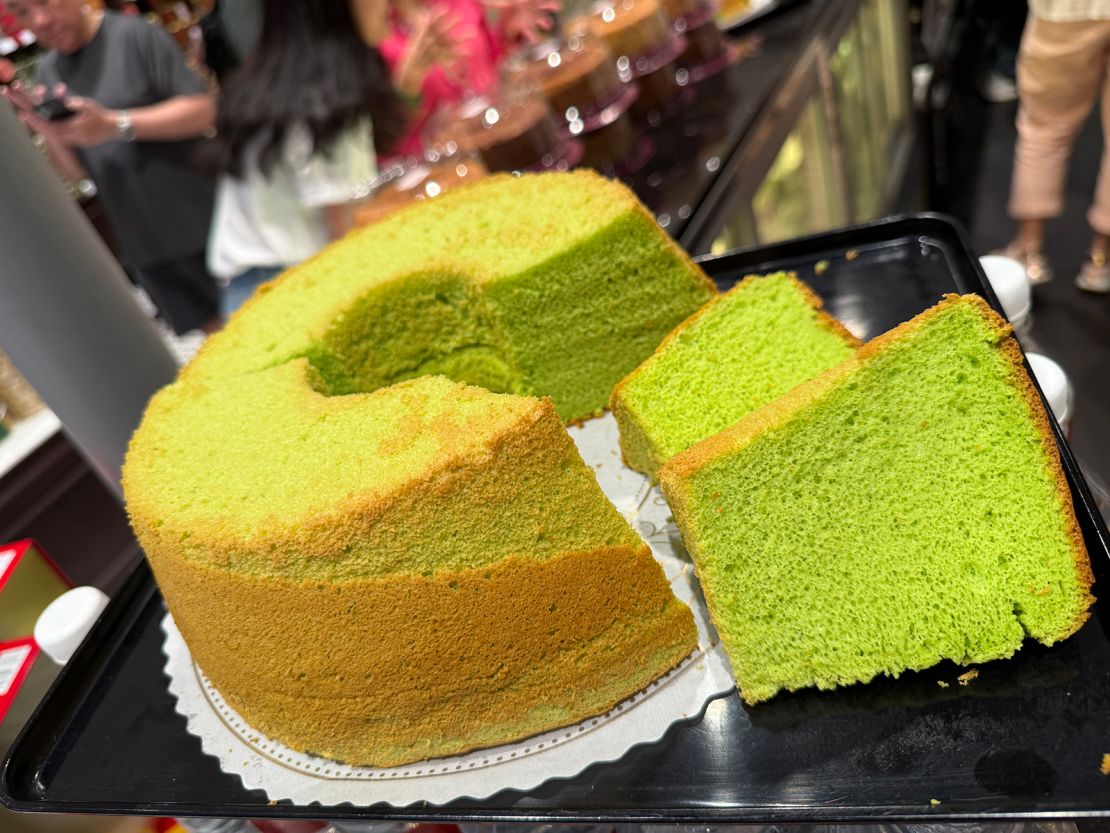Introduction
Singapore’s pandan chiffon cake, known for its vibrant green color and delicate, grassy vanilla flavor, has transitioned from a local delicacy to a global food phenomenon. Once a simple treat enjoyed by locals, pandan cake is now gaining international recognition. In this post, we’ll explore how this humble dessert became a worldwide sensation and why its unique flavor is now beloved in cities from Hong Kong to New York.
1. The Origins of Pandan Cake

Pandan cake is made using the pandan plant, a tropical ingredient native to Southeast Asia. The plant, which has a sweet, aromatic taste, is used in cooking and baking, often to infuse flavors into desserts like cakes and rice. Singapore’s pandan chiffon cake has evolved over the years, with its first appearance in the 1970s. Since then, it has become an iconic dessert, a staple in bakeries and homes alike.
2. How Bengawan Solo Sparked the Pandan Revolution
One of the key players in the pandan cake craze is Bengawan Solo, a bakery founded in 1979 by Anastasia Liew. What began as a small neighborhood shop quickly became a household name in Singapore. Liew’s vision and dedication to perfecting pandan chiffon cake helped the dessert become a national obsession. Today, Bengawan Solo operates over 40 outlets in Singapore and continues to sell hundreds of thousands of pandan cakes annually.
3. Word-of-Mouth and Celebrity Endorsements
The bakery’s success was propelled not only by word of mouth but also by celebrity endorsements. Singaporean Mandopop star JJ Lin gifted Bengawan Solo’s pandan cakes to judges on a Chinese singing competition, while Taiwanese music icon Jay Chou posted about it on Instagram in 2022. These celebrity shoutouts helped the pandan chiffon cake gain visibility outside Singapore, driving global demand.
4. Expanding Beyond Singapore’s Borders

With its success in Singapore, Bengawan Solo has set its sights on international expansion. The bakery now has a significant presence in Changi Airport, Singapore’s major international hub, where five outlets cater to travelers. Demand for pandan cakes has surged in regions like Hong Kong, Taiwan, and mainland China, with customers requesting the cakes as gifts. Despite challenges like high rental costs in places like Hong Kong, Bengawan Solo is exploring ways to meet this growing demand with innovative packaging and distribution strategies.
5. The Global Popularity of Pandan
Beyond Singapore, pandan is becoming a sought-after flavor. From Hong Kong to New York, bakeries and restaurants are experimenting with pandan in a variety of desserts. In cities like Los Angeles and San Francisco, you’ll find pandan mochi, cronuts, and even ice cream. Pandan is following in the footsteps of matcha, which saw a surge in global popularity and is now considered a trendy flavor for both sweet and savory dishes.
Keri Matwick, a senior lecturer at Nanyang Technological University in Singapore, who researches food and language, says that there’s been a rise of interest in Asian baking in the US, including desserts flavored by ingredients like matcha, coconut and ube — a purple yam from the Philippines.
Matcha, a Japanese green tea that has been incorporated into everything from tiramisu to cupcakes to banana pudding, has become so popular that some tea sellers in Japan are warning of an impending shortage.
Now, it might be pandan’s turn to go global. “Matcha has already set that precedent of something green is okay,” says Matwick. “I think (pandan is) starting to emerge as more of a star than it ever has before.”
Conclusion
What started as a local dessert in Singapore has now become a global sensation. Pandan chiffon cake, with its light, fluffy texture and unique flavor, is winning hearts worldwide. As more people discover the tropical charm of pandan, it’s clear that this green cake is not just a passing trend but a lasting food revolution. Keep an eye out for pandan-flavored products in bakeries near you – the pandan craze is just getting started!









